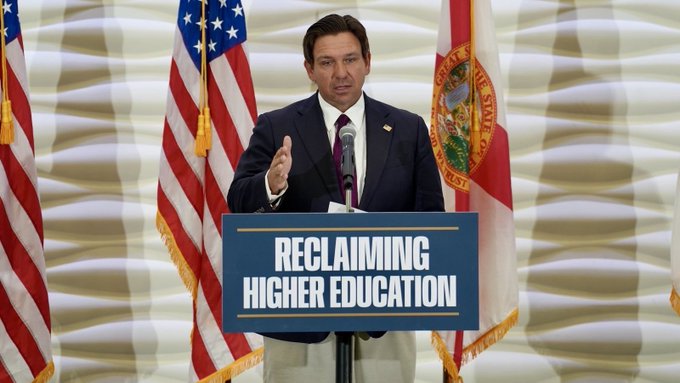Despite modest improvements, Pakistan’s education system remains structururally unbalanced, gender-biased, and administratively bloated. This is a call for bold reform: a shift to female-led primary schooling, decentralisation through maternal engagement, curriculum downsizing, and the accreditation of non-formal education pathways. By placing mothers and female teachers at the heart of school education and reorienting education toward life and occupational skills for sustained livelihoods, Pakistan can reshape its destiny and political economy.
—
### The Education Challenge in Pakistan
Thirty-nine percent of Pakistan’s 241 million people are illiterate. Despite modest gains, the education sector is critically underperforming. With a Human Development Index value of 0.540, the country ranks 164th out of 193 nations, underscoring pervasive deficits in literacy, life expectancy, and income.
Pakistan had pledged ambitious targets as a signatory to the Dakar Declaration: universal primary education, gender parity, and quality education for all. A full decade later, these promises remain largely unfulfilled.
According to the Economic Survey (2024-25), 38 percent of children aged 5-16 remain out of school, and educational outcomes trail behind South Asian peers on nearly every metric.
—
### Gender Gap and Learning Inequity
Girls account for 43 percent of total enrolment, but their numbers diminish across education levels: 37 percent in primary, 20 percent in middle, and fewer than 10 percent in higher secondary education. Completion rates are dismal: 42 percent of girls complete primary education compared to 51 percent of boys.
Literacy stands at 52.8 percent for women, trailing 68 percent for men. It plummets in rural areas where literacy averages 38 percent for women compared to over 60 percent for men.
—
### Structural Imbalance in Public Education
Public spending on education has risen to 1.91 percent of GDP—a modest improvement from the previous year but still far below the UNESCO-recommended 4 percent.
Recurrent expenditures dominate this allocation, sustaining a bloated operational architecture rather than enabling catalytic reform. School budgets continue to favour pre-existing infrastructure due to costing methodologies, leaving girls’ schools under-resourced and underserved.
A boys’ school exists within a kilometre of 77 percent of villages; girls’ schools meet this criterion in only 69 percent. This distance deters access and reinforces dropout.
—
### Buildings, Bureaucracy, and Barriers
Infrastructure remains a glaring bottleneck: 17 percent of primary schools lack appropriate buildings. Furniture, toilets, blackboards, and basic instructional tools are missing in many.
Many parents mistrust the schooling environment, particularly for their daughters.
Teachers, though now relatively better paid, are hamstrung by a system that prizes scale over substance. Recruitment remains skewed, training is patchy, and support nearly nonexistent. The teaching experience is often punitive, disconnected, and uninspiring.
The education bureaucracy is overstaffed with administrative personnel rather than technical staff who support pedagogy, regulate quality, and assess learning outcomes. Most districts lack capacity for instructional coaching or curriculum delivery oversight.
A recalibration is imperative to reduce administrative bloat, expand technical staffing, and focus on direct academic support.
—
### A Feminized Frontline for Education
Among Pakistan’s most underutilized assets in the education ecosystem are mothers—present, engaged, and consistently invested in their children’s well-being.
In rural and peri-urban areas, fathers often travel for work or remain relatively detached from schooling concerns, leaving mothers as frontline guardians of children’s rights.
The child in the village, the teacher in the classroom, and the mother at the doorstep must all be woven into a shared story of learning.
To harness this untapped reservoir of advocacy and support, primary schooling must be assigned exclusively to female teachers, especially in underserved regions. Female educators can better engage mothers as partners—not just in academic learning, but also in child protection, attendance monitoring, and community-led support systems.
Together with community teachers, mothers can become potent champions of both education continuity and safe learning environments.
—
### Building Trust through Gender-Sensitive Approaches
Such a gender-sensitive shift can catalyse trust and traction. Children, especially girls, are more likely to attend schools where maternal figures have a visible role.
It also creates a feedback loop where female teachers and mothers co-create solutions, monitor school conditions, and advocate for improvements.
School Management Committees (SMCs) must be revitalised with maternal inclusion. Over 90 percent of SMCs currently exist only nominally, lacking operational clarity or ownership.
The revamped Punjab SMC Policy, 2024, has seen inconsistent implementation. Women-led, community-rooted governance must become the foundation for sustainable reform.
—
### The Role of Privatisation and Public-Private Partnerships
Rather than expanding government control, primary education should be privatised, especially in underserved areas, with robust regulatory oversight.
Carefully structured and monitored public-private partnerships can diversify options, stimulate innovation, and relieve the public sector of its unwieldy operational load.
—
### From Access to Autonomy
Girls’ education must transcend enrolment targets to become a strategy for transformation.
Safe environments, female teachers, flexible pathways, and curriculum relevance remain pivotal to girls’ access to education.
For girls to thrive, they must not only attend but also engage, excel, and envision futures beyond inherited constraints.
Non-formal education (NFE) models should be accredited through centralised assessments, allowing marginalised children—especially girls—to gain certified completion of primary schooling.
For rural and culturally constrained communities, NFE pathways must be extended to higher secondary levels, offering continuity, credibility, and mobility to girls aspiring to overcome barriers to education.
—
### Curriculum for Livelihoods, Harmony, and Humanity
The current syllabus is cognitively overloaded and socio-politically skewed.
At primary and secondary levels, the number of subjects must be reduced, prioritising comprehension over memorization and relevance over repetition.
Such factors have significantly contributed to widespread perceptions that education is irrelevant to livelihood prospects among underserved segments of society.
To align learning with future livelihoods, technical content and occupational skills must be embedded across disciplines.
The promotion of do-it-yourself (DIY) learning, craftsmanship, repair skills, digital literacy, and entrepreneurial thinking can nurture both competence and confidence.
Equally urgent is the need for life skills education: financial literacy, socialisation, hygiene practices, ecological awareness, and civic responsibility.
These should replace religiously prescriptive content, which is better cultivated at the household level.
Where religious instruction is retained, it should be reframed as civic ethics, rooted in humane, tolerant behaviours and interfaith harmony.
—
### A New Political Economy of Learning
Pakistan’s education crisis is not merely a sectoral issue; it is a political economy dilemma rooted in priorities, institutional design, and ideological discomfort with decentralisation.
Reform cannot be incremental; it must be structural, beginning with a reassessment of how education is defined and whom it serves.
If Pakistan is to achieve inclusive growth, social stability, and democratic resilience, education must be treated as infrastructure—not charity.
The current system must be reimagined and transformed: privatised at the base, regulated at the core, and liberated from bureaucratic grip.
The child in the village, the teacher in the classroom, and the mother at the doorstep must be woven into a shared story of learning—a story not of quotas and expenditure, but of dignity, autonomy, and aspiration.
Let Pakistan’s next decade of education be not just a revision but a reinvention.
https://www.thenews.com.pk/tns/detail/1346843-re-imagining-the-political-economy-of-learning


